For some time, I've wanted to put together a quickly deployable HF station that I can use from a backpack while hiking in the local mountains and desert, or just for use with a bug out bag. We've all seen the pictures of the military applications and I wanted something that would work reasonably well for civilian use. I've owned the Elecraft KX3 since it came out (I was one of the first to receive the kit when it shipped) and have been searching for a suitable backpack antenna ever since. Chameleon Antenna has provided me with an elegant solution to complete the setup.
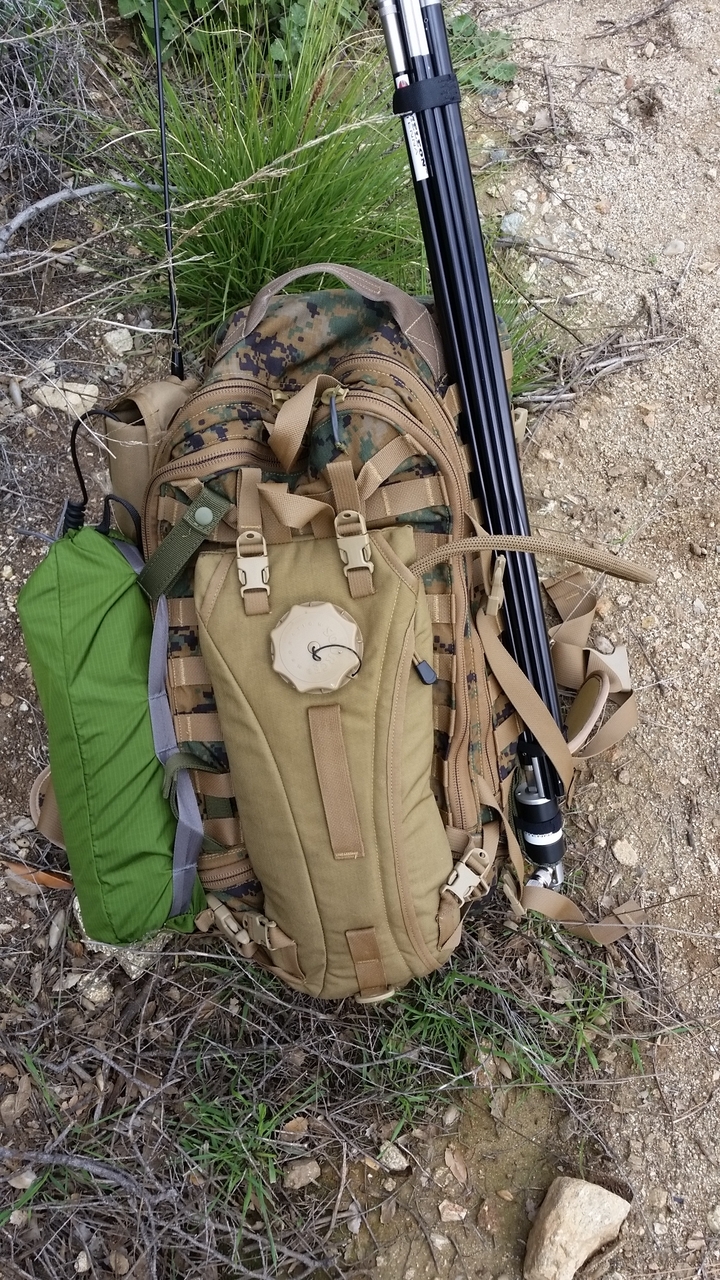
There are a couple of different ways to configure the Chameleon products to create the Chameleon man-pack antenna; the setup in the picture above includes the CHA HYBRID-MICRO which is a 5:1 UNUN in a heavy duty package with 60' of wire, the 10'-8" CHA MIL WHIP, and the CHA MIL WHIP EXT which is a 6'-6" whip weighing 1 lb. In this example, I used the PALS webbing on the side of my USMC ILBE Recon pack as the attachment for the antenna, sliding the base of the whip extension through all of the webbing. The rest of the antenna folds down neatly and is secured using velcro straps.
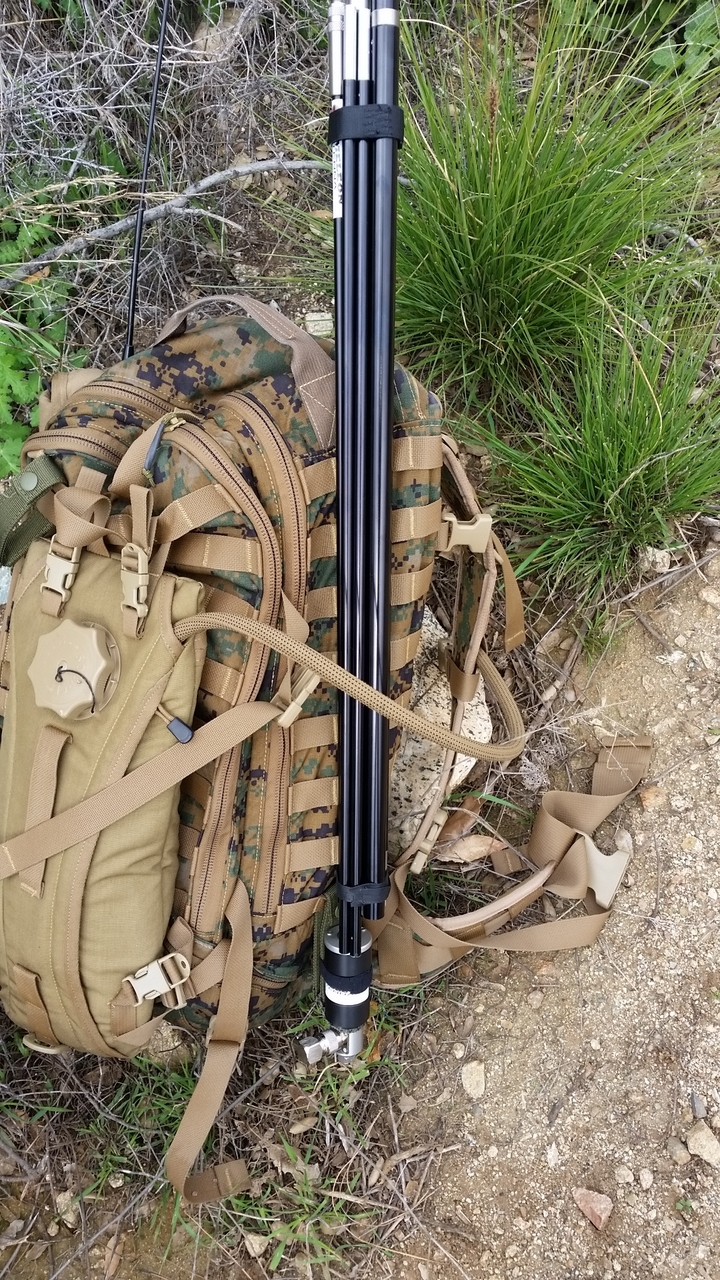
The Chameleon CHA MICRO is the heart of the solution. This sturdy UNUN is configured in a manner that will allow you to use it either with a standard 3/8-24 antenna whip, or with a longer wire suspended from something like a tree. The base lug acts as the counterpoise should you choose to use one.
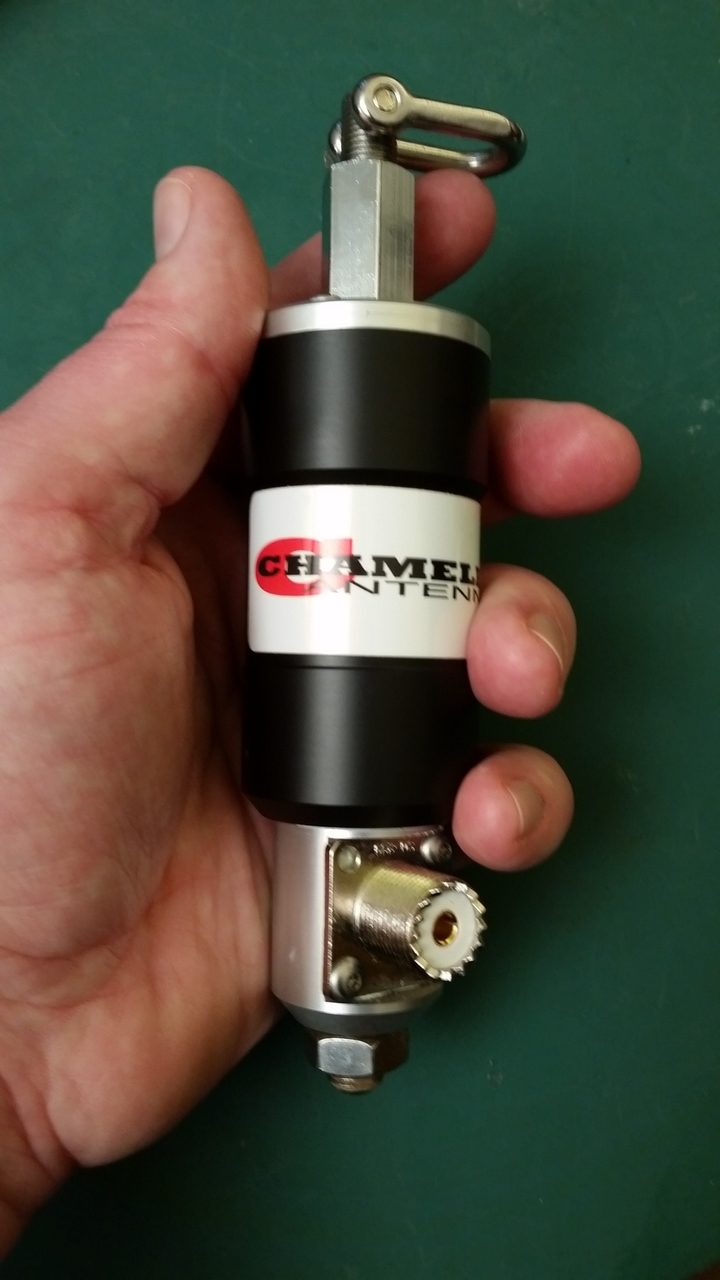
The Micro also comes with 60' of wire on a kite winder that can be used either as the main radiating element or as the counterpoise:
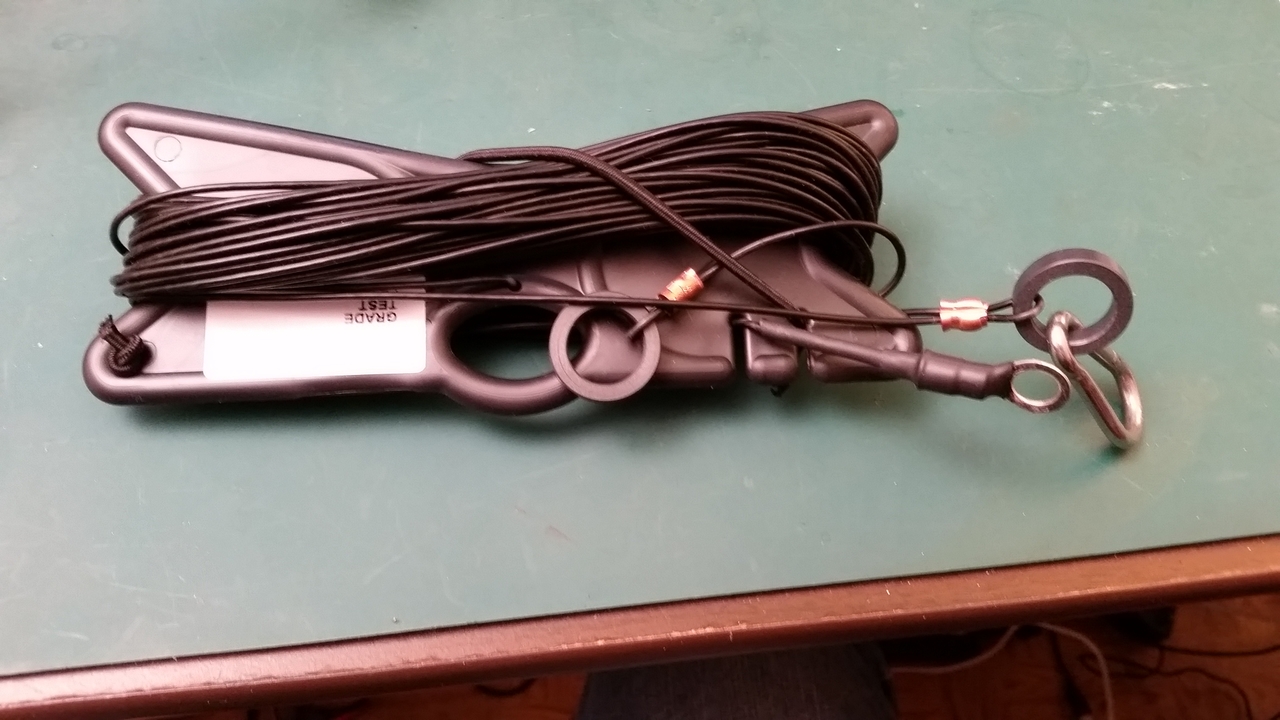
For the Man-Pack application, you would only ever use this as counterpoise until you got to a stationary location with adequate support. It's a nice option, but I found that the wire was a little too heavy gauge and bulky for the typical backpacking use-case. I will probably opt to swap this out for something much more compact that will serve the same purpose.
The main whips (dubbed CHA-MIL by Chameleon) are basically high quality tent poles with shock cord and a 3/8-24 mounting adapter pinned on one end. The are sturdy, well made and have as little flex as a shock cord antenna element can have.
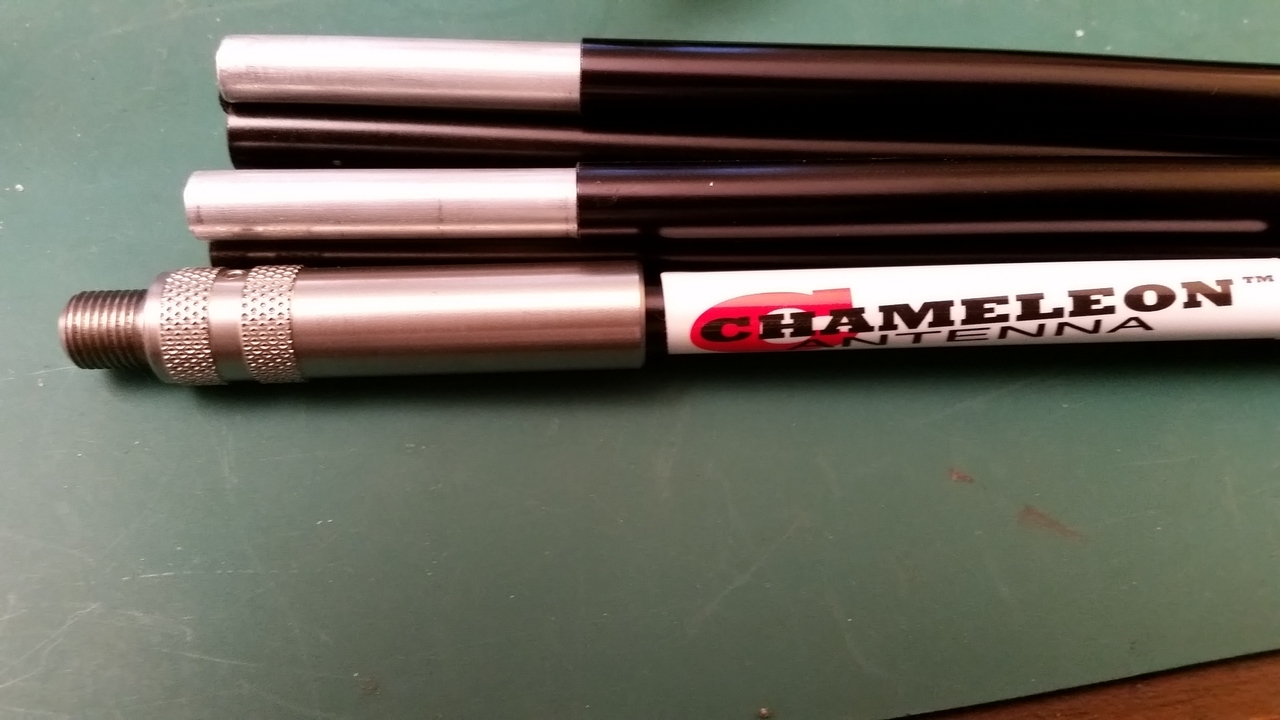
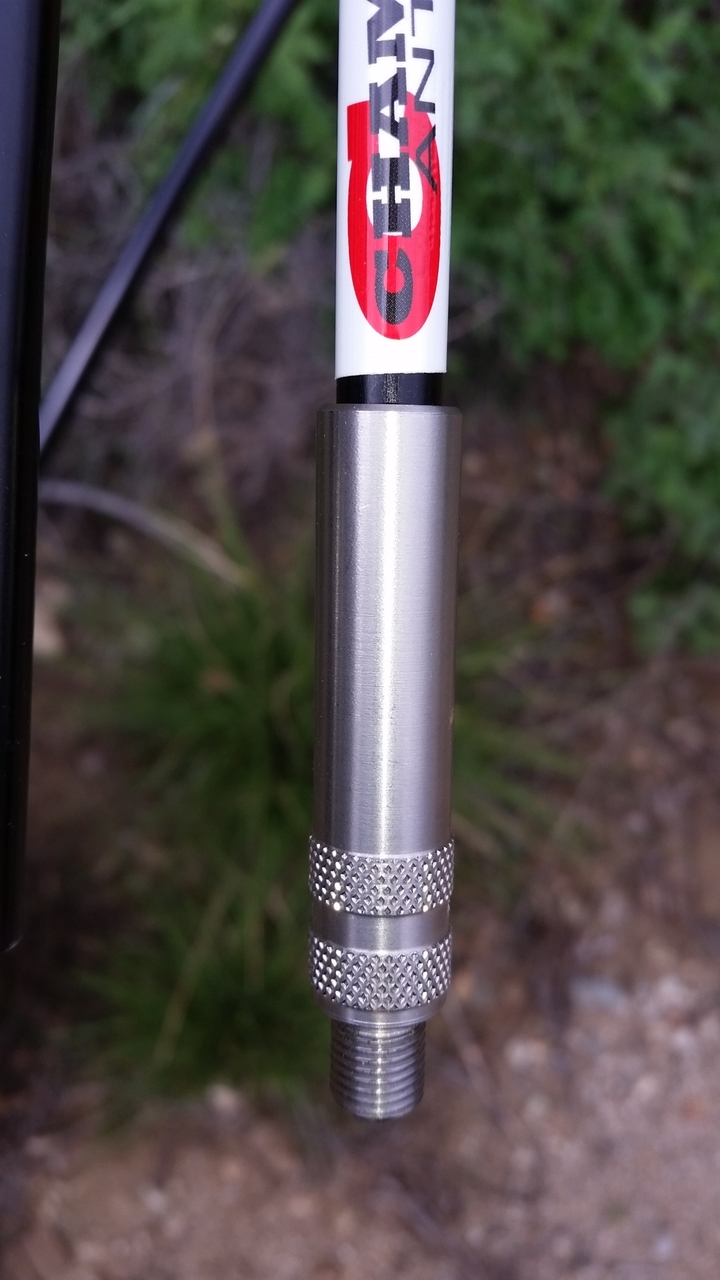
Securing the UNUN base of the antenna to the pack was simply a matter of using a MOLLE strap with some cord to lash it to the strap - the end result is a nicely secured and packable antenna that doesn't require separation from the pack to deploy. The PALS system is really is the way to go for constructing a portable antenna that is super quick to deploy. I also added a PL-259 to BNC adapter to add a little extra speed to the deployment process.
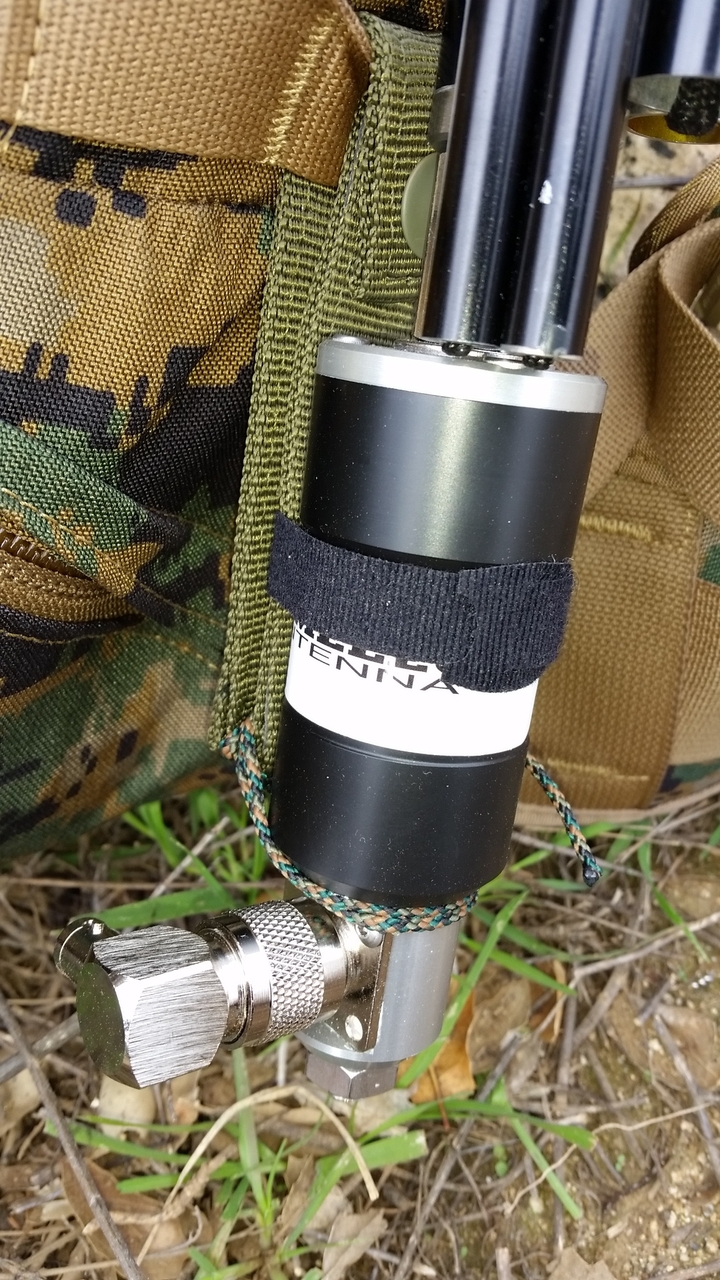
To deploy, I just set the pack on the ground, bracing it with some rocks, logs, or whatever else I can find to keep the pack upright. In this picture, I've deployed it with the whip extension, making the total height of the antenna just over 17'.
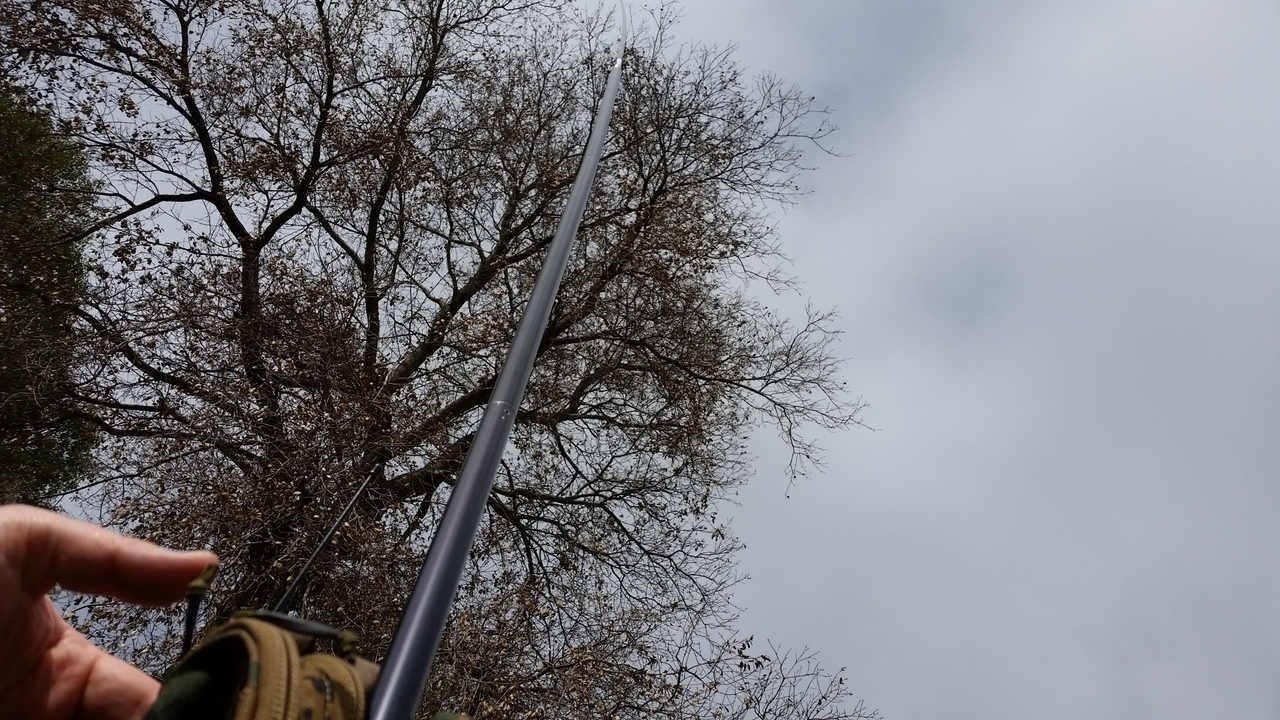
And this is where you run into a problem with this setup. While the whip extension is very rigid, the side of the pack is not. The whole antenna has a high center of gravity and wants to fold over onto the pack. I took some stuff out of the pack to stabilize the base of the pack, as well as used some rocks to balance it to get it stable. Another idea might be to use some small cord with tent pegs to guy the base of the extension. The added height that the extension adds is a good idea to help increase performance of the antenna but it also results in a trade-off for stability and functionality.
In this fuzzy cell phone pic, I've used my water bladder to stabilize the base of the pack and have the KX3 resting on my carry pouch, plugged into the antenna.
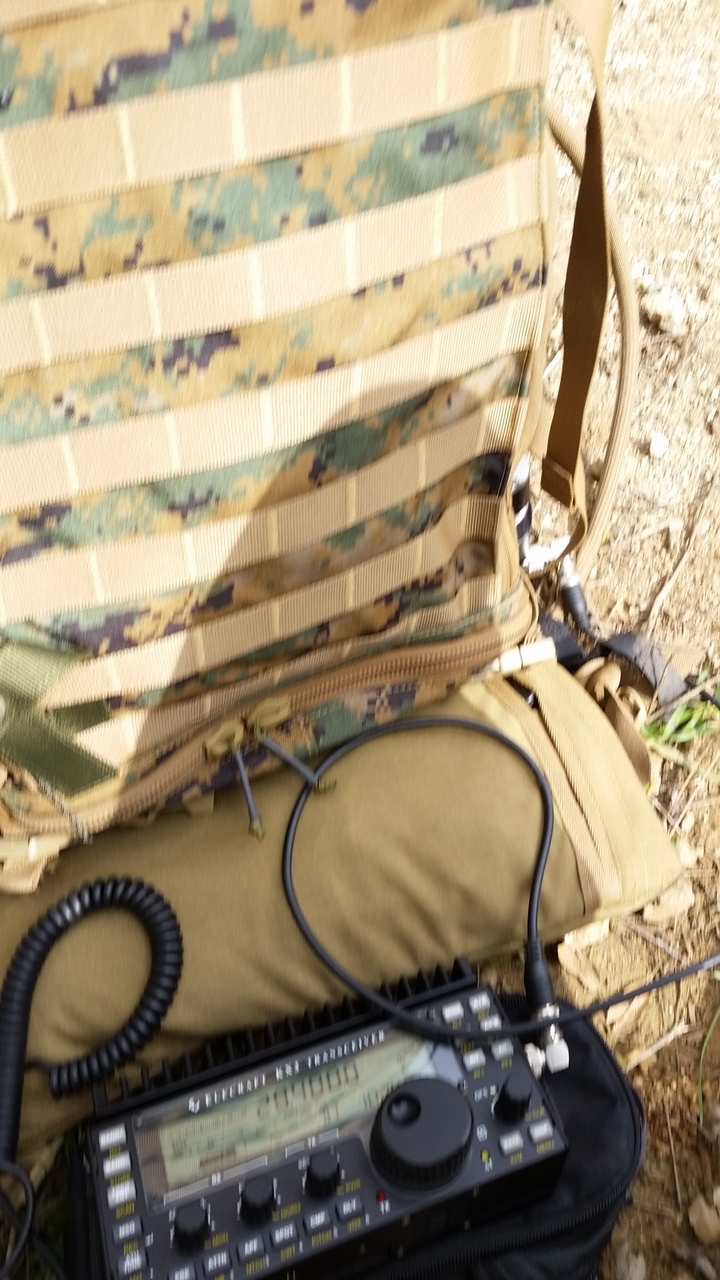
The KX3 has no problem tuning 6m-40m using the shown setup, which is not using a counterpoise wire. I made a short video that demonstrates me communicating with an NPOTA station in Wyoming (I'm in Southern California)
Later in the day, I tried a different configuration where I got rid of the whip extension and only used the 10'-8" whp for the main antenna. For this test, I deployed the counterpoise wire out about 30' and was successful in making a good contact to Hawaii right at grey-light.
After playing with the options for a bit, my ongoing manpack configuration will be the MIL WHIP with the CHA-MICRO. I will not normally take the extension unless there's a specific reason to do so. Using just the regular whip makes deploying the antenna while still attached to the pack much more manageable because it is much lighter and less rigid. As a result, the antenna is less prone to folding over onto the backpack. It's also more inline with the purpose for a man-pack: light, packable, easy to deploy and break down, and can still facilitate basic communications. If you don't mind carrying an extra pound, carry the wire which can be used for both counterpoise or a main antenna if you're near a support structure. The Elecraft KX3 with internal batteries is the perfect rig for this application; if you can add an external battery, the rig's output power can jump from 5 watts to 15 watts - a significant increase!
This is a really fun HF setup which is also extremely portable and lightweight. There's not really any reason why you can't take this portable station with you on any walk or hike and be on the air in seconds. You could even deploy the antenna, put the pack back on your back and operate the KX3 in your hands! My quest for a great Man-Pack station has been filled, hopefully this will inspire you to get out and experience nature while having a little fun with ham radio, as well.

There are a couple of different ways to configure the Chameleon products to create the Chameleon man-pack antenna; the setup in the picture above includes the CHA HYBRID-MICRO which is a 5:1 UNUN in a heavy duty package with 60' of wire, the 10'-8" CHA MIL WHIP, and the CHA MIL WHIP EXT which is a 6'-6" whip weighing 1 lb. In this example, I used the PALS webbing on the side of my USMC ILBE Recon pack as the attachment for the antenna, sliding the base of the whip extension through all of the webbing. The rest of the antenna folds down neatly and is secured using velcro straps.

The Chameleon CHA MICRO is the heart of the solution. This sturdy UNUN is configured in a manner that will allow you to use it either with a standard 3/8-24 antenna whip, or with a longer wire suspended from something like a tree. The base lug acts as the counterpoise should you choose to use one.

The Micro also comes with 60' of wire on a kite winder that can be used either as the main radiating element or as the counterpoise:

For the Man-Pack application, you would only ever use this as counterpoise until you got to a stationary location with adequate support. It's a nice option, but I found that the wire was a little too heavy gauge and bulky for the typical backpacking use-case. I will probably opt to swap this out for something much more compact that will serve the same purpose.
The main whips (dubbed CHA-MIL by Chameleon) are basically high quality tent poles with shock cord and a 3/8-24 mounting adapter pinned on one end. The are sturdy, well made and have as little flex as a shock cord antenna element can have.


Securing the UNUN base of the antenna to the pack was simply a matter of using a MOLLE strap with some cord to lash it to the strap - the end result is a nicely secured and packable antenna that doesn't require separation from the pack to deploy. The PALS system is really is the way to go for constructing a portable antenna that is super quick to deploy. I also added a PL-259 to BNC adapter to add a little extra speed to the deployment process.

To deploy, I just set the pack on the ground, bracing it with some rocks, logs, or whatever else I can find to keep the pack upright. In this picture, I've deployed it with the whip extension, making the total height of the antenna just over 17'.

And this is where you run into a problem with this setup. While the whip extension is very rigid, the side of the pack is not. The whole antenna has a high center of gravity and wants to fold over onto the pack. I took some stuff out of the pack to stabilize the base of the pack, as well as used some rocks to balance it to get it stable. Another idea might be to use some small cord with tent pegs to guy the base of the extension. The added height that the extension adds is a good idea to help increase performance of the antenna but it also results in a trade-off for stability and functionality.
In this fuzzy cell phone pic, I've used my water bladder to stabilize the base of the pack and have the KX3 resting on my carry pouch, plugged into the antenna.

The KX3 has no problem tuning 6m-40m using the shown setup, which is not using a counterpoise wire. I made a short video that demonstrates me communicating with an NPOTA station in Wyoming (I'm in Southern California)
Later in the day, I tried a different configuration where I got rid of the whip extension and only used the 10'-8" whp for the main antenna. For this test, I deployed the counterpoise wire out about 30' and was successful in making a good contact to Hawaii right at grey-light.
After playing with the options for a bit, my ongoing manpack configuration will be the MIL WHIP with the CHA-MICRO. I will not normally take the extension unless there's a specific reason to do so. Using just the regular whip makes deploying the antenna while still attached to the pack much more manageable because it is much lighter and less rigid. As a result, the antenna is less prone to folding over onto the backpack. It's also more inline with the purpose for a man-pack: light, packable, easy to deploy and break down, and can still facilitate basic communications. If you don't mind carrying an extra pound, carry the wire which can be used for both counterpoise or a main antenna if you're near a support structure. The Elecraft KX3 with internal batteries is the perfect rig for this application; if you can add an external battery, the rig's output power can jump from 5 watts to 15 watts - a significant increase!
This is a really fun HF setup which is also extremely portable and lightweight. There's not really any reason why you can't take this portable station with you on any walk or hike and be on the air in seconds. You could even deploy the antenna, put the pack back on your back and operate the KX3 in your hands! My quest for a great Man-Pack station has been filled, hopefully this will inspire you to get out and experience nature while having a little fun with ham radio, as well.
